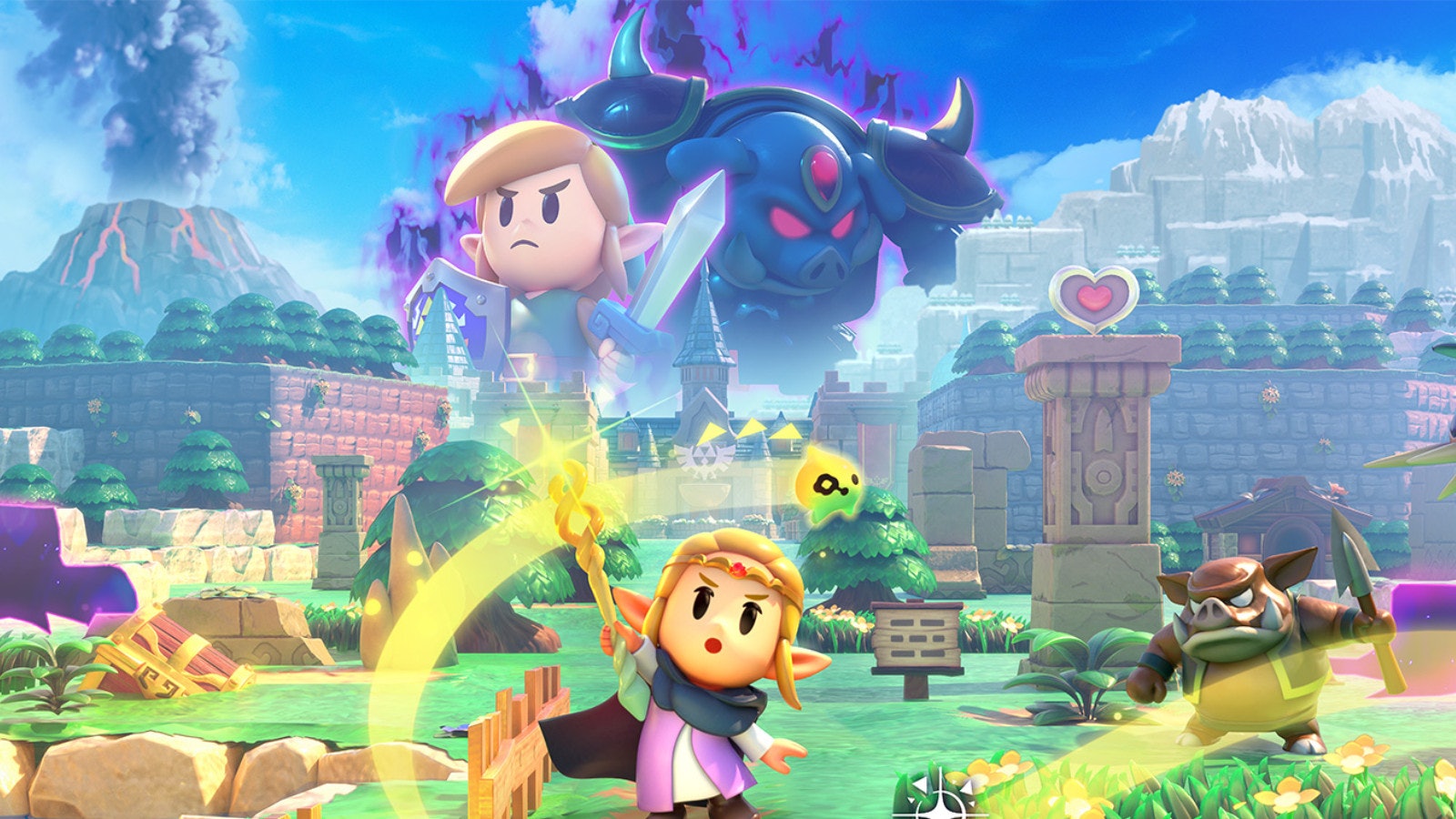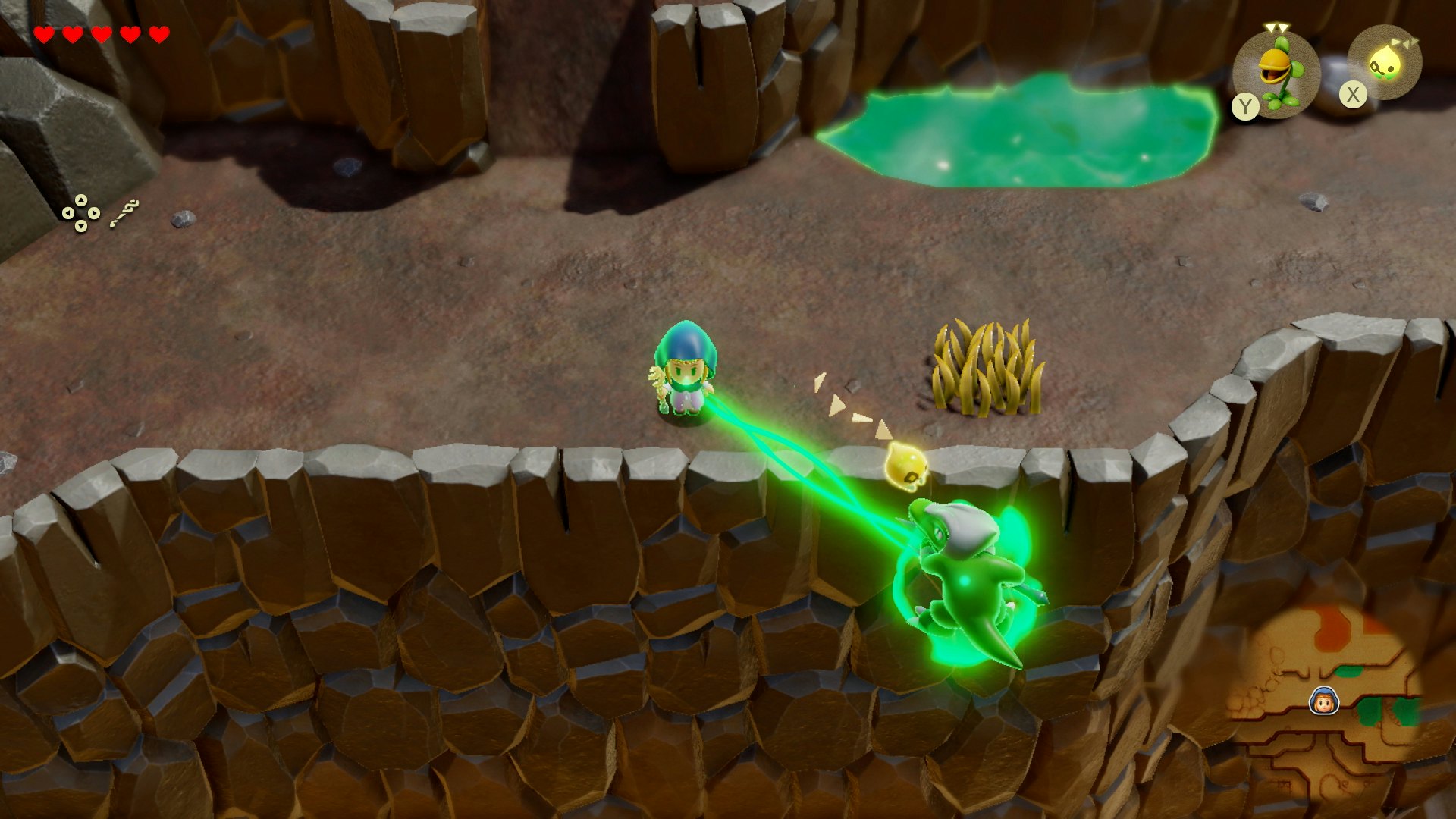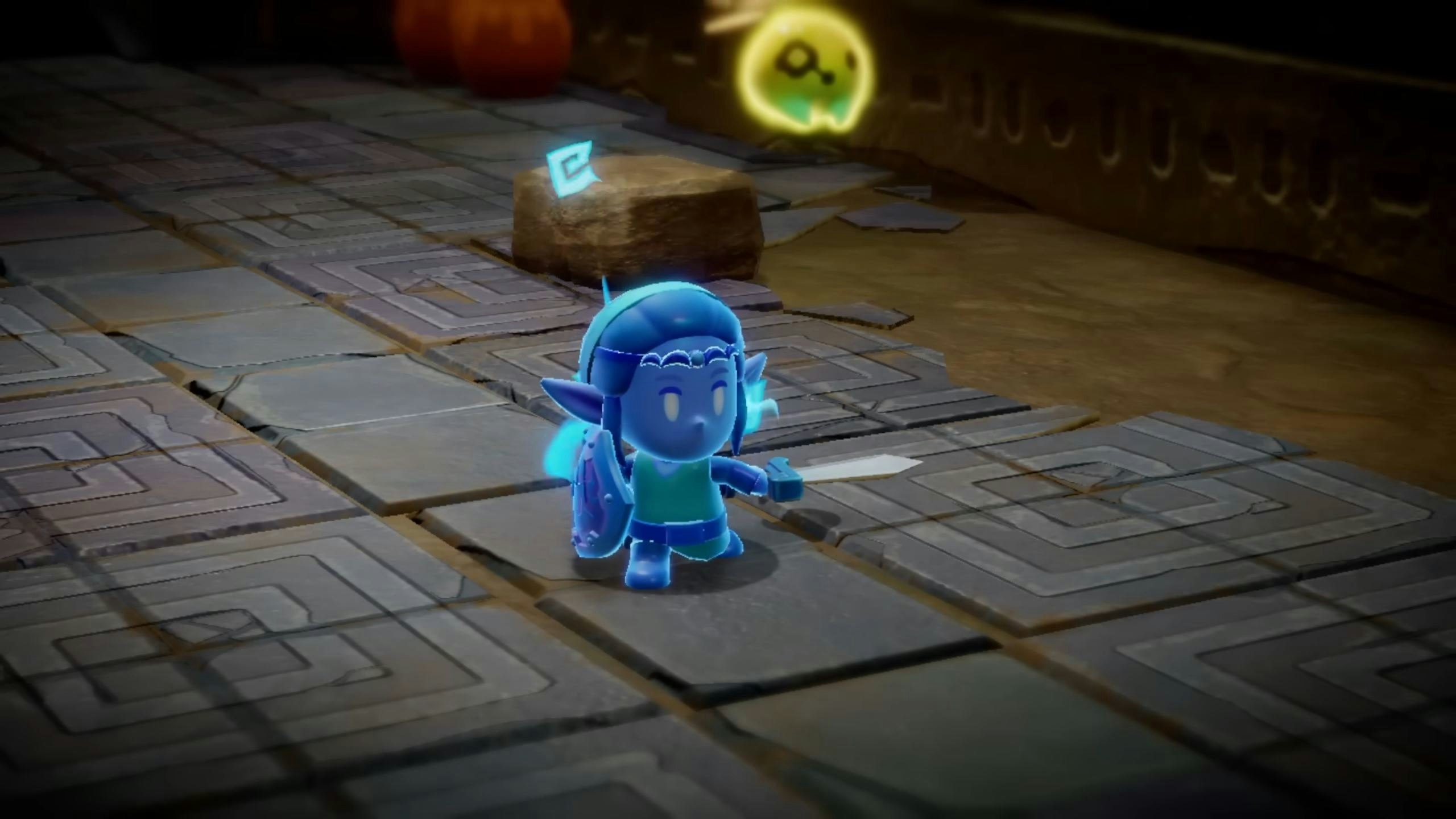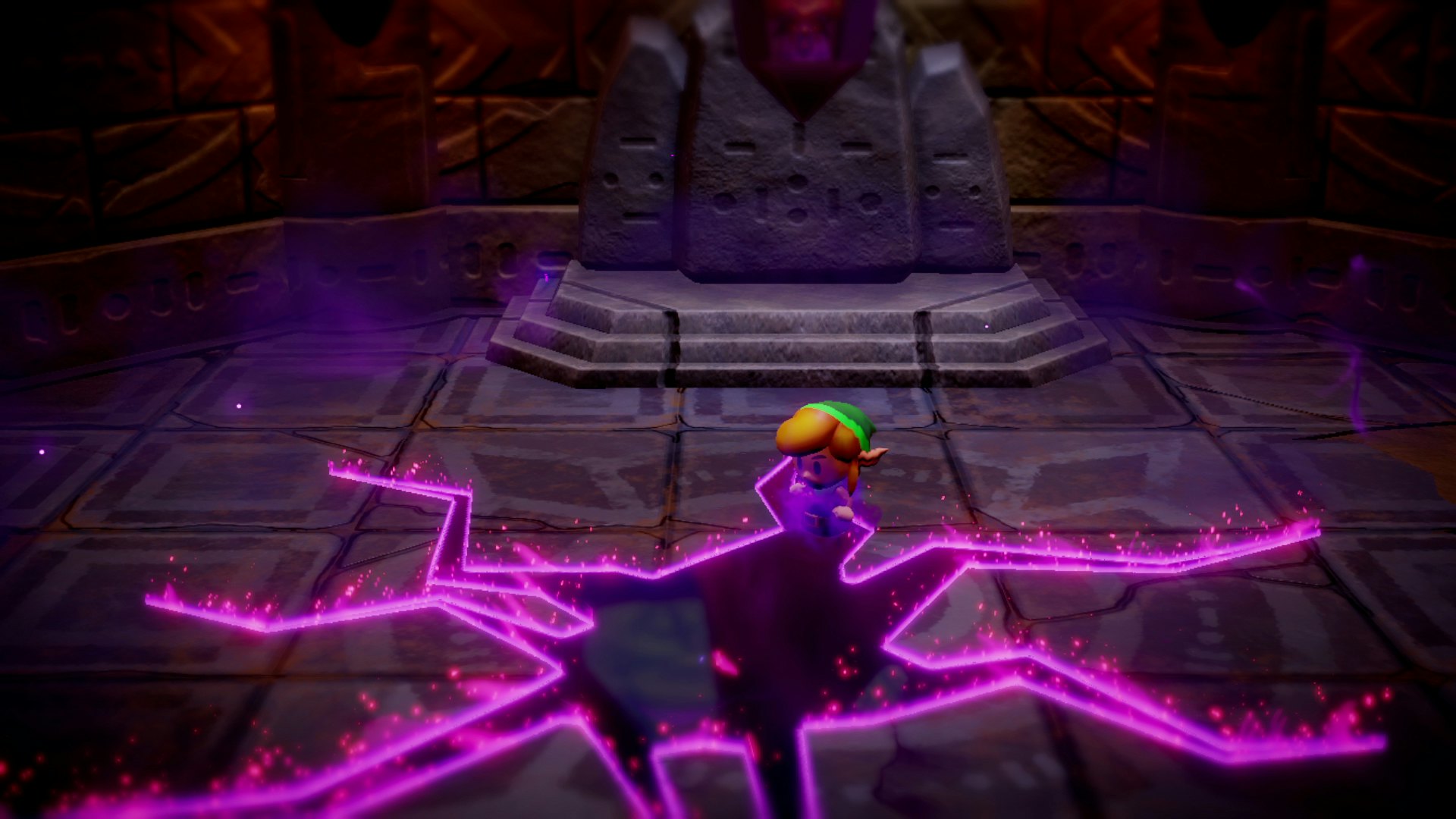
The princess is locked away by a monstrous villain, and it’s up to a valiant knight to take up his sword and save her. It’s a tale as old as time, and one we’ve seen in countless video games — including every main entry of The Legend of Zelda. But now, the princess finally gets her chance to shine, and with her sword (and a legion of loyal monsters) at her side, proves she’s more than worthy of saving the realm this time around.
The giant, glowing marquee over The Legend of Zelda: Echoes of Wisdom is that it’s the first game to make Princess Zelda its protagonist. (We’re ignoring the CD-i games for this distinction.) That twist has been a long time coming, and it makes Echoes of Wisdom a fresh take on the classic series. Rather than making the game a standard Legend of Zelda adventure with a different star, Echoes of Wisdom takes a new approach with its combat and puzzle-solving to fit its change in perspective. That alone makes it one of the most exciting Legend of Zelda games in ages. While there’s plenty that could be improved if Nintendo continues making Zelda-starring games (which I hope it does), Echoes of Wisdom’s clever, incredibly versatile echo mechanic makes it the star debut Zelda deserves.
Echoes of Wisdom opens with Princess Zelda captured by Ganon, like so many times before. But this time, she ends up leading the charge to save Hyrule when Link is sucked into a dark rift after freeing her. Conveniently, Zelda soon meets up with Tri, a mysterious spirit who gives her the power to create “echoes” of any enemy she defeats and many objects she finds in the world. From there, Zelda sets off on a quest to unmask a group of royal impostors, defeat the monster trying to absorb all of Hyrule into another dimension called the Still World, and save that strange boy in a green tunic who came to her rescue earlier.
A Whole New Hyrule

Echoes of Wisdom is an open-world game, and taking advantage of that is the best way to play. Its story leads you from one rift to the other, where you’ll dive into the Still World to tackle a dungeon and close the rift from the inside. The game’s dungeon design is great across the board, featuring plenty of puzzles that tend to be simple but satisfying to solve. You can make your way through the Still World with echoes you gain within, but it’s always better to have more options at your disposal, which you’ll only gain by exploring the world.
Right from the start of the game, you can go anywhere you want — though you may find some parts of the map too challenging at first. By venturing off the main story path, you’ll have the chance to find more echoes, which can open up new combat options and puzzle solutions, and power up by fighting heart containers and other important stat-boosting items.
Fortunately, the world is a joy to explore. Hyrule is packed with caves and dungeons of varying sizes, which are split between top-down and 2D platforming sections. Along with granting bonuses for completing them, these dungeons are a great place to find clever puzzles to test your skills. The moment I realized I could scale almost any wall and even walk across treetops, the game opened up for me. There are no invisible walls within the map, nothing stopping you from wandering into areas you have no business being in yet, and Echoes of Wisdom rewards you more often than not for your inquisitive nature.
The Power of a Princess

Where classic Legend of Zelda games have a slowly growing arsenal of weapons and Breath of the Wild introduced Link’s magical iPad full of powers, Echoes of Wisdom gives Zelda three abilities to work with. The primary one is the echo power. After learning an echo, Zelda can summon a copy of it at any time. Each summon costs a certain number of points, represented by floating triangles above Tri’s head, and her pool of points grows throughout the game. The next lets Zelda attach herself to things in the world and either move them around or follow their movement. Finally, she has the swordfighter form, which lets her use a sword (and later a bow and bombs) by spending energy from a meter that can only be filled by defeating enemies spawned from rifts.
While it’s a short list of powers, they’re enough to tackle any challenge thrown at Zelda. Tears of the Kingdom was all about experimentation with its building mechanics, and Echoes of Wisdom follows a similar path. Finding the best combination of monster echoes to take down different types of foes feels like a satisfying mix of combat and puzzle solving, and following summons with the ability to fly or crawl up walls can take you to otherwise inaccessible parts of the map. The sheer number of echoes you can find (more than 100 by the end) present seemingly limitless ways to approach combat, puzzles, and exploration. That makes Echoes of Wisdom a great candidate for multiple replays, or for taking your time to discover as many bizarre combinations of summons as you can just for the satisfaction of doing things the hard way.
But compared to your echo and bind powers, swordfighter form feels undercooked. When Echoes of Wisdom was announced, it got some criticism for not showing Zelda with a sword, which many read as showing Zelda being too fragile for combat. Then when swordfighter form was revealed, giving her a sword but only in limited circumstances, another wave of criticism commenced. I’ve argued before that Zelda doesn’t need a sword at all to be heroic or powerful, and I stand by that. But after finishing the game, I don’t see swordfighter form as a satisfying solution either.
Bringing a Sword to an Echo Fight

To use swordfighter form, Zelda has to use energy from a gauge that can be expanded by finding Might Crystals throughout the world. The gauge can only be filled by defeating enemies in or near rifts, meaning you need to be extremely conservative with when you use it. That meant that for most of my playthrough, I didn’t or couldn’t use swordfighter form, relying entirely on echoes instead.
That’s not necessarily a problem. Finding inventive ways to use your echoes is far more interesting than swinging a sword around by far, but it can make battles feel inactive. The most effective way to deal with most threats is either summoning the biggest, baddest monster you can or flooding the area with a bunch of smaller ones and letting them handle things, which doesn’t leave Zelda with much to do. There are more active forms of combat, like summoning rocks or exploding monsters and hurling them at enemies, but these almost always make battles more difficult. Swordfighter form is also a near-necessity in boss fights, which are a real mixed bag. While there are plenty of fun bosses to fight, they shift the balance heavily away from puzzles and toward combat, which is a shame given how many unique puzzle-based boss fights the echo system could enable.
Swordfighter form lets you tackle fights on your own or support your summons, but since there are hard limits on how much you can use it, it rarely comes into play outside of the Still World, where energy can easily be replenished. I’m glad that Echoes of Wisdom emphasizes summons over direct combat, but giving Zelda something to do in combat other than use swordfighter form would have gone a long way toward keeping her involved in fights.
A Legend of Her Own

Just as it innovates on the series’ combat, Echoes of Wisdom makes some bold moves with its story. As we saw in the game’s debut trailer, Echoes of Wisdom starts with Link freeing Zelda, then being trapped in the Still World. That might make it seem like Zelda’s quest is to rescue Link, which isn’t quite the case. While she does want to save him from the Still World, her quest is centered on saving Hyrule itself. You’ll be unsurprised to learn that she does in fact save Link near the end of the game, which leads to a final, all-too-brief dungeon that presents a mechanical twist so good it could probably support an entire game on its own.
One unexpected revelation near the beginning of the game is that Link isn’t the legendary hero he often is in the series. He’s just some kid with a funny hat, a sword, and a penchant for helping locals with their problems. While he comes up a lot in NPC dialogue and plays a bigger role toward the end of the game, he is for the most part just a helpful citizen of Hyrule rather than the hero everyone is waiting on to save them. That decision helps center Zelda as a hero in her own right. She’s not trying to free the man who can save Hyrule — she’s saving it herself and busting him out of the Still World at the same time so he can help her get the job done.
Echoes of Wisdom positions Zelda as a heroine rather than a damsel in distress at all times, but it can’t keep from giving Link a bit of the credit the series has long denied her. Toward the end of the game, Link is often referred to as Hyrule’s “hero” despite spending most of his time trapped in a crystal. Then there’s the strange decision to model Zelda’s swordfighter form after Link and the fact that he seems to be able to use his sword as much as he wants, while Zelda needs to draw on some supernatural power to do it, which again positions this mostly absent character above the game’s true heroine. I went back and forth on how I felt about the story’s handling of Zelda and Link’s relative prominence but in the end came away feeling like it’s an admirable but sometimes shaky first attempt to bring the series’ namesake out from under Link’s shadow.
Echoes of Wisdom proves that even after nearly 40 years, The Legend of Zelda still has room to surprise us. Finally giving Princess Zelda the spotlight is a major shakeup on its own, and the game’s inventive new mechanics show that even after Breath of the Wild, top-down Zelda games have plenty of new ground left to cover. While it doesn’t fully commit to its best mechanical ideas or its newfound heroine’s ability to lead her own game, Echoes of Wisdom feels like the Zelda-fronted game I’ve been waiting decades for. I only hope this isn’t her last turn as the series’ star.
8/10
The Legend of Zelda: Echoes of Wisdom launches Sept. 26 on Nintendo Switch.
INVERSE VIDEO GAME REVIEW ETHOS: Every Inverse video game review answers two questions: Is this game worth your time? Are you getting what you pay for? We have no tolerance for endless fetch quests, clunky mechanics, or bugs that dilute the experience. We care deeply about a game’s design, world-building, character arcs, and storytelling come together. Inverse will never punch down, but we aren’t afraid to punch up. We love magic and science-fiction in equal measure, and as much as we love experiencing rich stories and worlds through games, we won’t ignore the real-world context in which those games are made.







